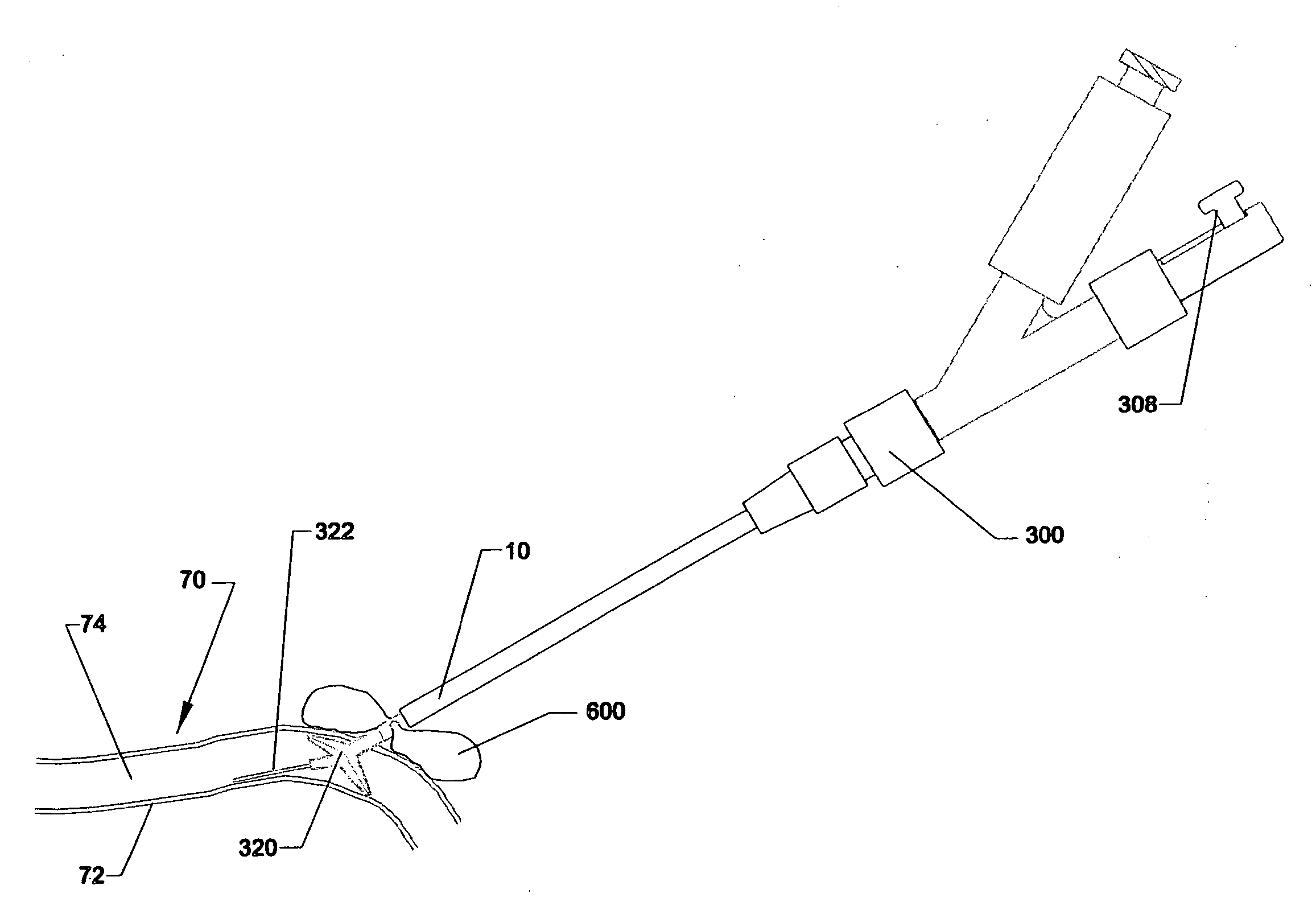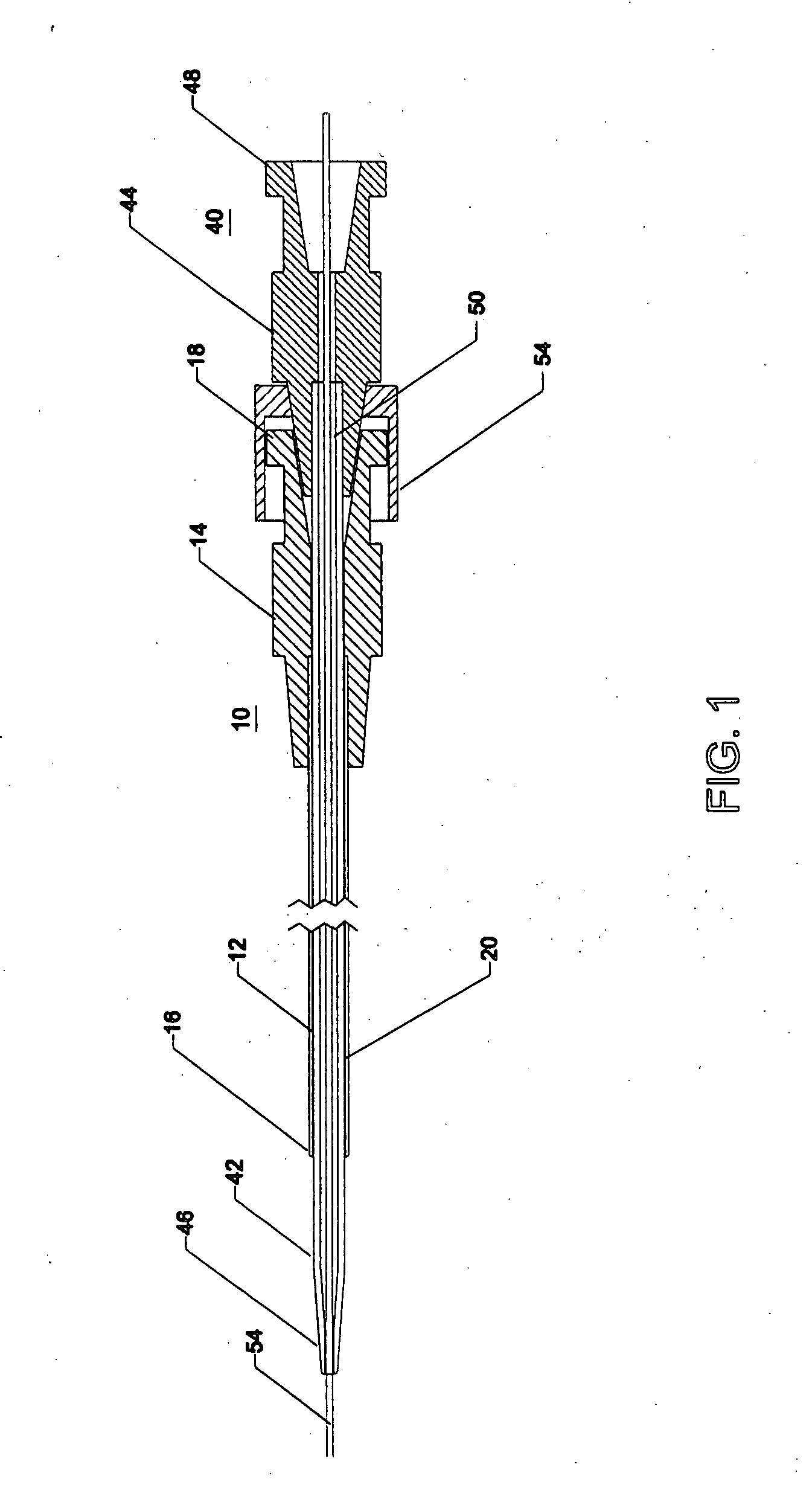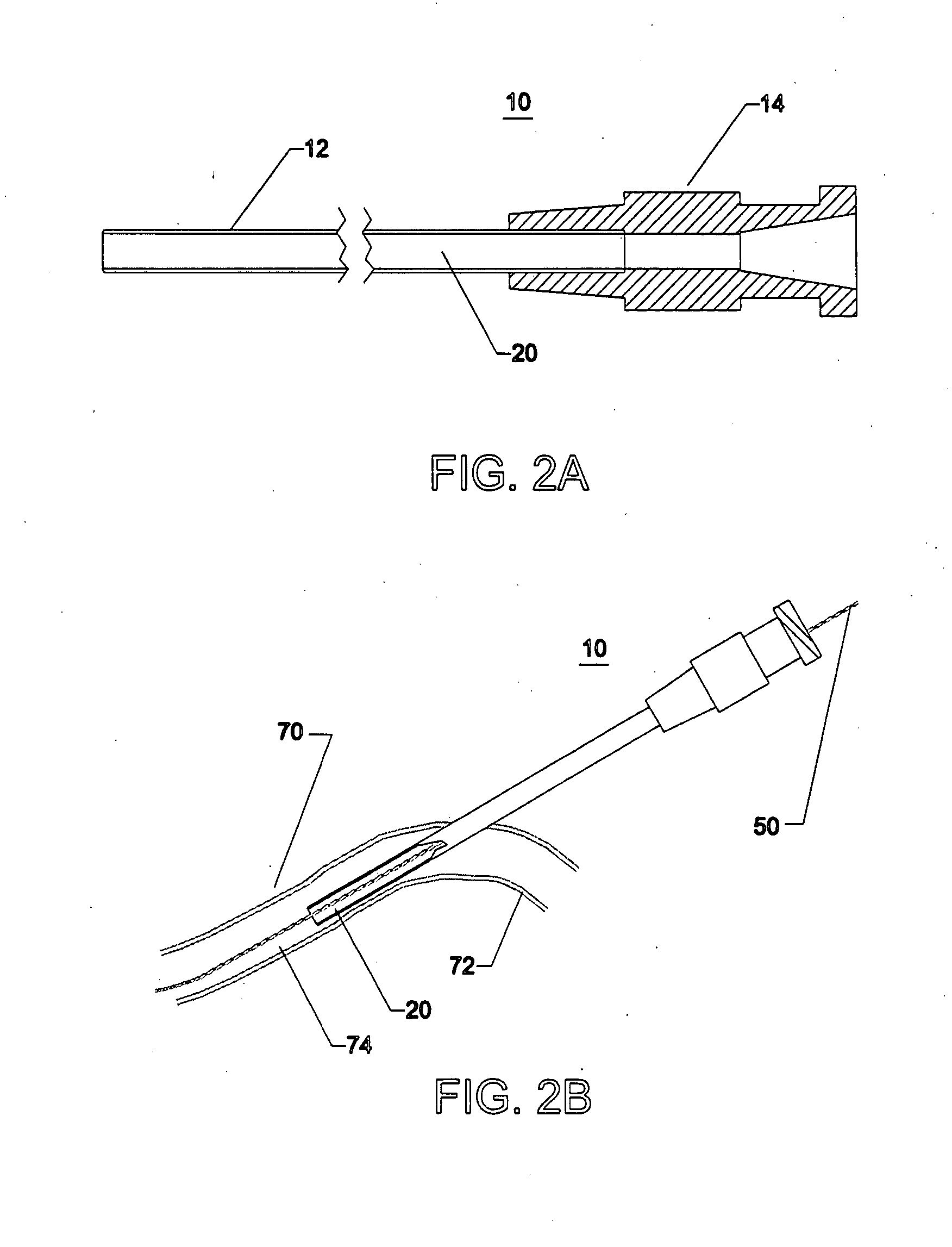Method and apparatus for percutaneous wound sealing
a percutaneous wound and wound technology, applied in the field of percutaneous wound sealing, can solve the problems of large hole in the vessel wall, complicated closure of these punctures, and interference with the body's natural clotting ability
- Summary
- Abstract
- Description
- Claims
- Application Information
AI Technical Summary
Benefits of technology
Problems solved by technology
Method used
Image
Examples
Embodiment Construction
[0038] In accordance with one or more embodiments of the inventions, a wound sealing apparatus and method, are described herein. In order to fully specify this preferred design, various embodiment specific details are set forth, such as the composition of the sealing material and apparatus for connecting the sealing catheter to already placed introduction sheaths. It should be understood, however that these details are provided only to illustrate the presented embodiments, and are not intended to limit the scope of the present invention.
[0039] A catheter or sheath may be described as being axially elongate in configuration. The catheter further may be described as having a proximal end and a distal end. The proximal end is that end furthest from the patient and closest to the person operating the instrument. The distal end is that end closest to the patient or inserted first into the patient. The proximal direction may be described as that direction further from the patient and the...
PUM
 Login to View More
Login to View More Abstract
Description
Claims
Application Information
 Login to View More
Login to View More - R&D
- Intellectual Property
- Life Sciences
- Materials
- Tech Scout
- Unparalleled Data Quality
- Higher Quality Content
- 60% Fewer Hallucinations
Browse by: Latest US Patents, China's latest patents, Technical Efficacy Thesaurus, Application Domain, Technology Topic, Popular Technical Reports.
© 2025 PatSnap. All rights reserved.Legal|Privacy policy|Modern Slavery Act Transparency Statement|Sitemap|About US| Contact US: help@patsnap.com



